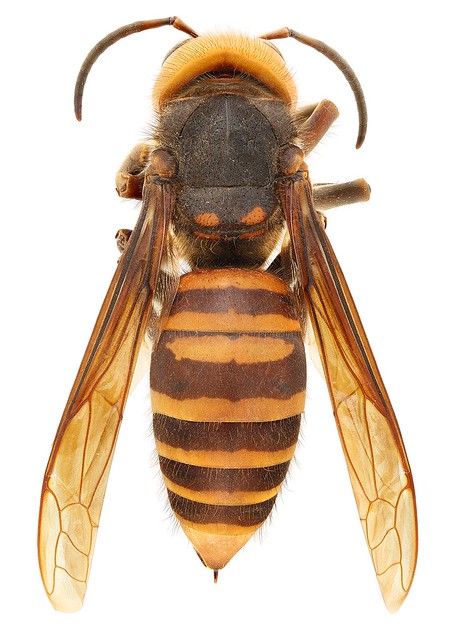Jun 22, 2020
It’s not the first time that European honey bees and other pollinators in the United States have encountered invasive pests, with the parasitic Varroa mite being the most noteworthy. For years, researchers and beekeepers have wondered what the next invasive pest of concern would be. Perhaps Tropilaelaps mites, a parasitic mite that feeds on bee brood? Or an Asian honey bee, which is known to outcompete our European honey bees? Ultimately, it was the Asian giant hornet, making a confirmed appearance in Washington state during winter of 2019.
Asian giant hornets are extremely large hornets that range in size from 1.5 to over 2 inches long. They are equipped with relatively massive mandibles (teeth) and can easily tear honey bees in half. Usually, these hornets will not attack honey bees until late summer or early fall, when workers are feeding new queens and males within the colony that will emerge to mate in the fall.
When attacking a honey bee colony, the hornet excretes a pheromone marker on the hive to signal to others that the colony is its target. Up to fifty hornets attack the colony at once and can eliminate an entire honey bee colony in less than two hours. The hornets harvest bee brood to feed to their young and will defend the bee hive as if it were their own nest.
To date, Asian giant hornets have not been identified outside of Washington state and they are actively subject to quarantine measures by USDA’s Animal Plant Health Inspection Service (APHIS) and Washington Department of Agriculture. In addition to quarantine activities, USDA is actively supporting research efforts to develop interactive identification tools, map the hornet’s genome, and improve the efficacy of lures, traps, and monitoring programs.
If you believe you have encountered an Asian giant hornet, calmly leave the area, particularly if you are allergic to bee or wasp stings. To the untrained eye, these hornets can be easily confused with other insects. APHIS’ Asian Giant Hornet and Lookalikes Guide provides detailed photos and information for identification.
If you are in the state of Washington, sightings can be reported on the Washington State Department of Agriculture website. Outside of Washington, contact your state apiary inspector. If it is safe to do so, take a photo or collect a dead specimen of the pest to help experts identify the insect. Beekeepers—especially those located in the Pacific Northwest—can assist in tracking the possible movement of this pest by carefully examining the entrances of their hives for decapitated bees or for hives that have been taken over by hornets during the late summer and early fall seasons.

Technical Supported by Japan Press Release

